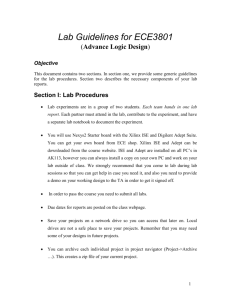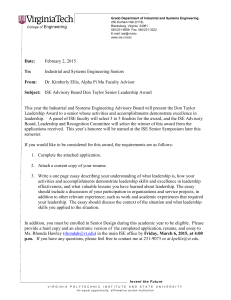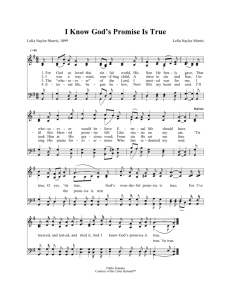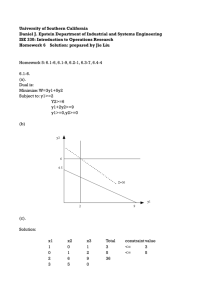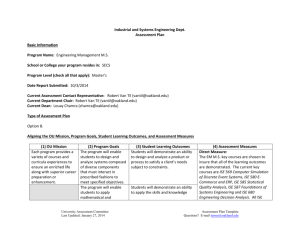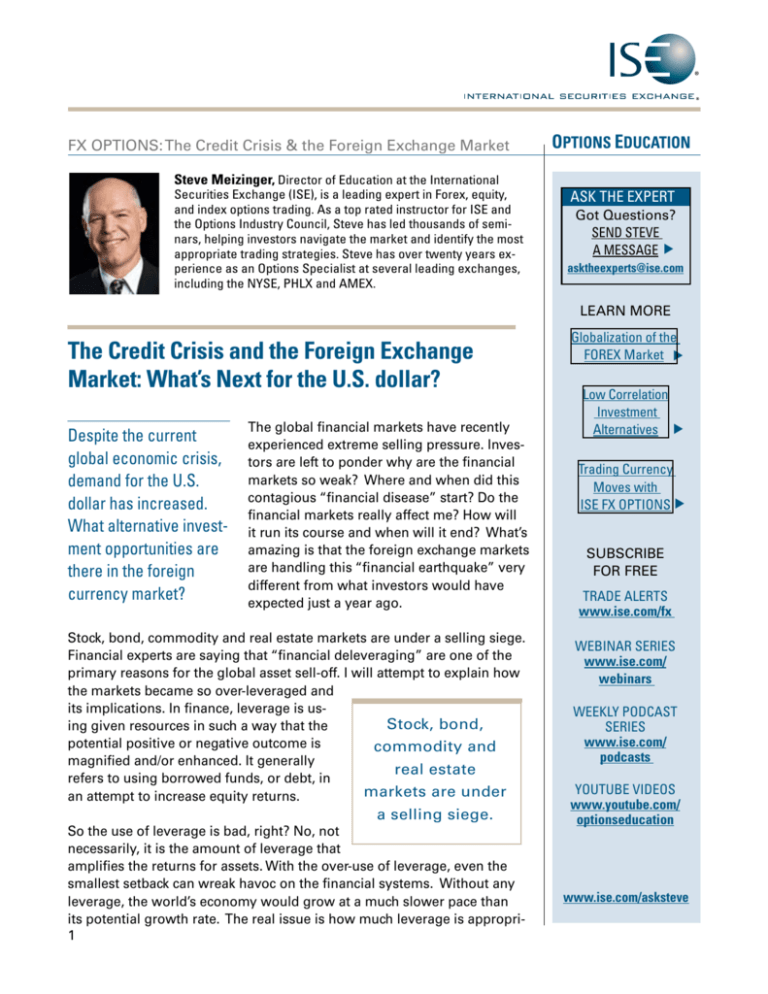
FX OPTIONS: The Credit Crisis & the Foreign Exchange Market
Steve Meizinger, Director of Education at the International
ASK THE EXPERT
Got Questions?
Send Steve
a message
▲
Securities Exchange (ISE), is a leading expert in Forex, equity,
and index options trading. As a top rated instructor for ISE and
the Options Industry Council, Steve has led thousands of seminars, helping investors navigate the market and identify the most
appropriate trading strategies. Steve has over twenty years experience as an Options Specialist at several leading exchanges,
including the NYSE, PHLX and AMEX.
Options Education
asktheexperts@ise.com
LEARN MORE
Stock, bond, commodity and real estate markets are under a selling siege.
Financial experts are saying that “financial deleveraging” are one of the
primary reasons for the global asset sell-off. I will attempt to explain how
the markets became so over-leveraged and
its implications. In finance, leverage is usStock, bond,
ing given resources in such a way that the
potential positive or negative outcome is
commodity and
magnified and/or enhanced. It generally
real estate
refers to using borrowed funds, or debt, in
markets are under
an attempt to increase equity returns.
a selling siege.
So the use of leverage is bad, right? No, not
necessarily, it is the amount of leverage that
amplifies the returns for assets. With the over-use of leverage, even the
smallest setback can wreak havoc on the financial systems. Without any
leverage, the world’s economy would grow at a much slower pace than
its potential growth rate. The real issue is how much leverage is appropri1
Trading Currency
Moves with
ISE FX Options
▲
The global financial markets have recently
experienced extreme selling pressure. Investors are left to ponder why are the financial
markets so weak? Where and when did this
contagious “financial disease” start? Do the
financial markets really affect me? How will
it run its course and when will it end? What’s
amazing is that the foreign exchange markets
are handling this “financial earthquake” very
different from what investors would have
expected just a year ago.
Low Correlation
Investment
Alternatives
▲
Despite the current
global economic crisis,
demand for the U.S.
dollar has increased.
What alternative investment opportunities are
there in the foreign
currency market?
Globalization of the
FOREX Market
▲
The Credit Crisis and the Foreign Exchange
Market: What’s Next for the U.S. dollar?
SUBSCRIBE
FOR FREE
Trade Alerts
www.ise.com/fx
Webinar Series
www.ise.com/
webinars
Weekly Podcast
Series
www.ise.com/
podcasts
YouTube Videos
www.youtube.com/
optionseducation
www.ise.com/asksteve
Options Education
The Credit Crisis and the Foreign Exchange Market:
What’s Next for the U.S. dollar?
(Continued)
Globalization of the
FOREX Market
Low Correlation
Investment
Alternatives
Trading Currency
Moves with
ISE FX Options
▲
2
LEARN MORE
▲
The current economic crisis may have started as far back as the late
1990’s, when the U.S. housing industry gained strength relative to the
general economy. In 1999, the U.S. banking and insurance industries
were further deregulated with the repeal of the Glass-SteagallAct. The
following year, the Commodity Futures Modernization Act of 2000 was
passed, barring regulation of the OTC swap market. This may have
been the watershed event that that dramatically and negatively impacted the current economic environment. As the dot-com recession
receded, the U.S housing bubble started to gain momentum. In 2004,
five U.S. investment banking firms were permitted to increase their
asktheexperts@ise.com
▲
How did this economic mess start? That is a tough question to answer,
but many experts believe that the markets allowed too much capital to
be allocated to questionable projects. There
are a multitude of reasons why there was
But probably
an abundance of capital available, including
very low interest rates for a relatively long
the most
period of time in many major banking cenimportant factor
ters (Tokyo and New York are two examples),
in the current
securitization of the mortgage market witheconomic
out proper documentation of qualified residential mortgages and insufficient regulation
situation was
of the non-transparent OTC derivative marthe asset-liability
kets. But probably the most important factor
mismatch.
in the current economic situation was the asset-liability mismatch. Borrowing short-term
to invest long-term makes sense as long as
there is capital to be borrowed. Many models assume you can “earn the
spread” by utilizing this strategy. Again this “appears” successful from
a modeling standpoint, but if you can’t fund the short-term, there isn’t
any long-term. Be careful of models, the weakest part of mathematical
models are the assumptions used. The modeled world cannot possibly
replicate the “real world” 100% of the time. .
Got Questions?
Send Steve
a message
▲
ate. There may be economic “bumps in the road’; the question is can the
economic shock absorbers handle the bumps. The markets are currently
trying to transition from a highly leveraged environment to a substantially
reduced environment in a relatively short period of time. This transition
has not occurred in an orderly fashion.
ASK THE EXPERT
SUBSCRIBE
FOR FREE
Trade Alerts
www.ise.com/fx
Webinar Series
www.ise.com/
webinars
Weekly Podcast
Series
www.ise.com/
podcasts
YouTube Videos
www.youtube.com/
optionseducation
www.ise.com/asksteve
Options Education
The Credit Crisis and the Foreign Exchange Market:
What’s Next for the U.S. dollar?
(Continued)
LEARN MORE
Globalization of the
FOREX Market
Low Correlation
Investment
Alternatives
▲
Trading Currency
Moves with
ISE FX Options
▲
3
asktheexperts@ise.com
▲
What happens in the financial markets really does matter to people on
“Main Street.” Capital markets were created to efficiently allocate financial
resources to those entities that use capital from those that are looking to
invest their excess capital at varying rates of return. This allocation process does not always work without flaws, as we have seen recently, but
it is the preferred mechanism for capitalism. The financial markets create
jobs, they allow for excess capital to be saved. The capital markets also
allow individuals to borrow money
for higher priced items such as cars
Without financial
or even homes over longer periods
intermediation, both
of time. Without financial intermediation, both borrowers and lenders
borrowers and lenders
would be worse off. The borrowing
would be worse off.
costs would increase dramatically
and the general economy would
suffer due to those higher borrowing costs. The financial markets affect all individuals, regardless if you
are a borrower or a lender. In fact, most individuals start off as borrowers
earlier in their life, and, as they mature, they usually gravitate to become
lenders to facilitate borrowing.
Got Questions?
Send Steve
a message
▲
financial leverage with the so called net capital rule. This allowed them
to increase their maximum capital leverage from 12:1 to 40:1. By 2005,
large parts of the U.S. market were experiencing a “real estate pricing
bubble” and 2006 is the top of that bubble. Home prices only began
to fall in early 2007. As prices fell, lenders began to pull back from their
lenient lending practices, which only exacerbated the decline. This was
the beginning of the credit crunch or what is now known as the “repricing of risk”. By September 2007, the first large financial casualty appeared; a large bank in the U.K. was experiencing a “run-on-the-bank.”
Northern Rock was the first large financial institution to experience this
panic. Depositors became nervous about their money and withdrew
their savings, this behavior feeds upon itself. This was the origin of the
vicious financial deleveraging cycle, banks, brokerage firms, insurance
companies have all been affected in various ways. The financial world
is now learning to live with much less leverage, possibly more regulation and most importantly, learning how to effectively balance their
asset-liability mix.
ASK THE EXPERT
SUBSCRIBE
FOR FREE
Trade Alerts
www.ise.com/fx
Webinar Series
www.ise.com/
webinars
Weekly Podcast
Series
www.ise.com/
podcasts
YouTube Videos
www.youtube.com/
optionseducation
www.ise.com/asksteve
Options Education
The Credit Crisis and the Foreign Exchange Market:
What’s Next for the U.S. dollar?
(Continued)
asktheexperts@ise.com
LEARN MORE
Globalization of the
FOREX Market
▲
Low Correlation
Investment
Alternatives
▲
Trading Currency
Moves with
ISE FX Options
▲
remedied.
The foreign exchange market prices the
relative value of various currencies each
day. The respective country’s money markets (short-term money) and the foreign exchange market are interwoven. Investors must balance the growth prospects (including inflation)
for the various currencies in relation to each other. Governments use
fiscal policy (spending and taxation) and monetary policy to affect their
economies. Monetary policy is implemented by the government central
bank such as the US Federal Reserve, European Central Bank, Bank of
Japan, Bank of England, Bank of Canada, Reserve Bank of Australia and
the Swiss National Bank. These institutions are some of largest central
banks in the world responsible for monetary policy, which consists of
the supply and velocity of money, as well as the cost of money (interest rate). The primary tool for the central banks is open market operations. The Open Market Operations are done by controlling the quantity of money in circulation by buying and selling credit instruments
(bonds and bills in US), foreign currencies and commodities. Central
banks have been known to target various objectives such as a certain
interest rate (US Fed funds), a foreign exchange relationship with another currency, or a relative value with a commodity such as gold. All
of these operations affect either increasing or decreasing the amount
of money in circulation to reach their stated objectives.
Got Questions?
Send Steve
a message
▲
Looking at the current market malaise, how will it run its course? No
market guru can accurately predict when the market will rebound or how
this deleveraging process can be remedied. Some experts believe that
the essence of the problem is asset deflation. Governments throughout
the world are busy pumping money into the
financial system to stem the decline in asset
No market guru
prices. The U.S Fed has been lending USD
can accurately
to central banks in trade for their currency
as investors sell out of foreign markets and
predict when
go to cash and repatriate money to the U.S.
the market will
This seems counter-intuitive to most invesrebound or how
tors; the US dollar has been rallying, despite such terrible fundamentals in the U.S.
this deleveraging
economy.
process can be
ASK THE EXPERT
SUBSCRIBE
FOR FREE
Trade Alerts
www.ise.com/fx
Webinar Series
www.ise.com/
webinars
Weekly Podcast
Series
www.ise.com/
podcasts
YouTube Videos
www.youtube.com/
optionseducation
www.ise.com/asksteve
3
Options Education
The Credit Crisis and the Foreign Exchange Market:
What’s Next for the U.S. dollar?
Convention
of
ISE FX
symbol
IS E F X P a i r s
Rate
modifier
ISE Underlying
rate examples
100
107.10 (1.0710 X 100)
USD/GBP
BPX
100
50.65 (0.5065 X 100)
USD/CAD
CDD
100
102.88 (1.0288 X 100)
USD/EUR
EUI
100
64.36 (0.6436 X 100)
USD/CHF
SFC
100
104.96 (1.0496 X 100)
USD/JPY
YUK
1
107.57 (107.57 X 1)
Will the financial rescue by governments worldwide be sufficient? Only
time will tell. Many experts believe that governments must work in an extremely coordinated matter to handle the current crisis. A big part of the
problem is the lack of confidence between banks, insurance companies,
pension funds, endowment funds and individual investors. Most market
participants are unwilling to invest or even lend their spare capital. The
foreign exchange market may be one market investors should closely
watch for further clues on the credit crisis. The International Securities
Exchange offers options trading on six currency pairs, ISE FX Options,
3
LEARN MORE
Globalization of the
FOREX Market
Low Correlation
Investment
Alternatives
Trading Currency
Moves with
ISE FX Options
▲
The excessive weakness in the banking system in 2008 has created a
paradoxical situation by increasing the demand for the US dollar. The
inter-bank market has not been working effectively in 2008. After the failures, or near failures, of Bear Stearns, Fannie Mae, Freddie Mac, Merrill
Lynch, Lehman Brothers, AIG, Washington Mutual, Wachovia and Fortis
the LIBOR (London Interbank Offered Rate) is extremely high. LIBOR is
the rate banks are willing to lend to each other. The higher the rate the
greater the uncertainty about other banks ability to repay these loans.
Short-term money transferal is paramount for a free market society. High
LIBOR rates have decreased the steady flow of money to a small drip. If
you cannot borrow short-term to finance payrolls, buy inventory or any
other business essentials, this effectively freezes the economy. The entire
free market becomes threatened.
asktheexperts@ise.com
▲
AUX
Got Questions?
Send Steve
a message
▲
USD/AUD
ASK THE EXPERT
▲
Construction
(Continued)
SUBSCRIBE
FOR FREE
Trade Alerts
www.ise.com/fx
Webinar Series
www.ise.com/
webinars
Weekly Podcast
Series
www.ise.com/
podcasts
YouTube Videos
www.youtube.com/
optionseducation
www.ise.com/asksteve
Options Education
The Credit Crisis and the Foreign Exchange Market:
What’s Next for the U.S. dollar?
(Continued)
which are completely transparent and allow investors to implement their
view of the US dollar relative to the major currencies. Another terrific
benefit to trading exchange-listed options is the near elimination of
counter-party risk. Please refer to the table on the previous page for a
further explanation of ISE FX Options.
The credit crisis seemed to worsen simultaneously with the US dollar
strengthening in late summer of 2008. One explanation is that U.S. investors are selling large quantities of international stocks and bonds and
bringing the USD back home to meet their current liquidity needs. If entities cannot roll their credit demands through short-term money markets,
they may be purchasing those dollars in the foreign exchange market
creating more demand for the US dollar. This encourages US investors to
“sell any and all international bids in stocks and bonds.” Once US investors receive the currency, they sell it and purchase USD to meet their
obligations.
The credit crisis of 2008 is equivalent to a “financial earthquake.” It has
affected investors all over the world. Money centers in Tokyo, Sydney,
Frankfurt, London, Toronto and New York have been affected as well as
global investors all throughout the world. Investors can use ISE FX Options to implement their own specific U.S. dollar forecasts whether you
are bullish, bearish or even neutral. Options allow investors tremendous
versatility in implementing those forecasts. Since the ISE FX Options are
a US dollar-based trading instrument, if you are bullish on the USD, you
could simply buy call options. If you are bearish, you could buy puts.
Spreads and other more complex strategies are also available.
The recent, unprecedented liquidity crisis in the global financial markets
has created many unintended consequences, but the question of who
is ultimately responsible is really irrelevant. Most experts can direct the
blame to countless entities, so playing the “blame game” is moot. The
current credit crisis affects everyone, some more than others. What is
surprising for many market participants is that the USD has held up so
well during this financial crisis. ISE FX Options gives investors the ability
to hedge US dollar exposure or implement a certain view of the currency
market. What is important is your view of the USD. Will demand continue to increase or will the US dollar experience a sell-off, either way, ISE
FX Options are available for your investment portfolio.
3
ISE FX Options®, the ISE
globe logo, International
Securities Exchange® and
ISE® are trademarks of
the International Securities Exchange, LLC.
Options involve risk and
are not suitable for all investors. Prior to buying or
selling an option, a person
must receive a copy of
Characteristics and Risks
of Standardized Options.
Copies of the document
may be obtained from your
broker or from the International Securities Exchange
by calling (212) 943-2400 or
by writing the Exchange
at 60 Broad Street, New
York, NY 10004. © 2008,
International Securities
Exchange, LLC. All rights
reserved.

